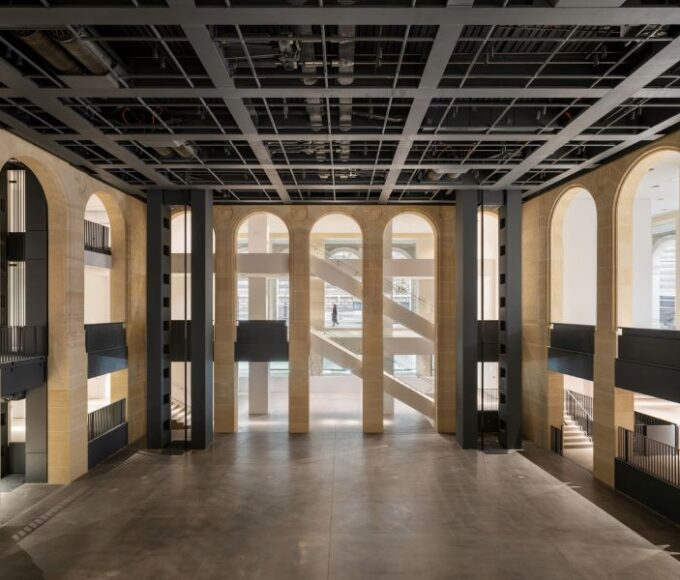Metal panels have a well-known history of being durable, long-lasting products with some examples lasting centuries (copper) and most lasting well past 50 years. While metals like aluminum, zinc, and copper have naturally long-lasting lifespans, steel panel systems get their longevity through the protective coatings that are applied to the steel itself.
Longevity of Steel Panels
Inside each painted steel panel are a number of layers that, depending on the combination, can last decades. Without these protective coatings, steel would still have a long lifespan, but rusting would inevitably set in and lower the overall performance of the product. To combat this, mills across the country started using alloy coatings to protect the inner layer of steel. These coatings are where we get galvanized and galvalume steel, each using its own mixture of zinc, aluminum, and other metals to provide a protective barrier for the base steel inside.
In addition to the coating, painted steel has a number of additional layers of paint. These layers can be adjusted based on the customer’s requests, providing varying levels of longevity. Because of the various adjustable layers of a metal panel system, warranties vary widely throughout the industry, from 10 to 50 years in length. These warranties are almost always paint-based warranties, covering the chalk and fade of the color itself. It is important to note that chalk and fade, even after 45-50 years, still mean the inner layers of steel are protected for many decades to come. Only when the inner bare steel is exposed does the integrity of the panel begin to weaken.

Durability of Steel Siding
Due to its location on a building, steel facades have less impact from weather conditions than their roofing counterparts. While each steel panel is designed to hold up directly against conditions like hail or wind, as a siding panel these conditions are typically lessened in impact.
Which Gauge Should I Use For Metal Siding?
A general rule to follow would be the thicker the metal, the better the long-term performance. However, installing 14 gauge steel (or 0.063 aluminum) as a metal siding panel would be considered overkill in the vast majority of residential projects. Using steel as an example, 24 gauge would offer you the best protection when compared to your needs, while 26, 28, and 29 gauge are also commonly used products in siding applications.
How Much Does Metal Siding Cost?
Metal siding can range widely in price depending on a number of factors. These can include the following:
- Type of Base Material: Steel, Aluminum, Zinc, or Copper
- Thickness of Material: Base, Substrate, etc.
- Quality of Paint Systems: SMP, PVDF, etc.
- Panel Waste: Extra material used in making of panel
- Clip System: Type of fastening of panel
Most residential designs are looking at steel or aluminum options, while copper and zinc are usually used more in commercial roofing or accents away from the ability to touch them. While steel is a commodity and pricing may vary dependent on a number of factors (listed above), the average price for a metal siding panel should range from $1-4 per square foot in a residential design.

How to Choose the Right Metal Siding?
Most manufacturers can help you choose the right panel for your design. If you are using a designer or architect, they often will have a few suggestions to choose from after working with the manufacturer themselves. For any build, there are going to be a range of options that fit the performance requirements, and often it will come down to aesthetics and pricing.
Bonus Tip
Remember that the process for creating cut-to-length panel systems requires detailed information about your project. The manufacturer can often help develop a take-off, but will need dimensions to use (usually in the form of blueprints or drawings). It is important to have your installer confirm the measurements before signing off on the final order for production. Depending on the time of the year and the panel system you are using, it is a good idea to plan on placing your order 3-5 weeks ahead of when you expect the material to arrive at the job site (check with your manufacturer for current lead times). This will ensure that the raw materials are available for the manufacturer, and they are able to fit you into the production schedule in time for your build.












